|
A nightclub (or "night club" or "club") is a drinking, dancing, and entertainment venue which does its primary business after dark. A nightclub is usually distinguished from bars, pubs or taverns, by the inclusion of a dance floor and a DJ booth, where a DJ plays recorded dance and pop music. Some nightclubs have other forms of entertainment, such as comedians, "go-go" dancers, a floor show or strippers. The music in nightclubs is either live bands or, more commonly
these days a mix of songs played by a DJ through a powerful PA system. Most clubs
cater to certain music genres, such as house music or salsa. The style
of music to a large extent, attracts the patrons. To be popular, a
nightclub must generate an enjoyable atmosphere.

Nelson
on evening venues
The
best clubs incorporate an interesting layout and fittings. I have been
to some clubs that are little more than a thinly veiled cattle market,
where it is inevitable beer and other drinks are spilt onto the floors
not only likely to, but actually causing accidents. This is bound to
happen where clubbers often exceed their limitations. I notice these
things because I don't drink or smoke. Odd you might think for a
clubber, but in fact I have just as good a time as my fellow clubbers
who are well oiled. The
secret is to soak up the vibes and let go.
I
thanked the stars the day the smoking ban was introduced. Unfortunately,
the ban brought with it other problems policing the system. Nicotine
addiction is so strong, clubbers are forced to herd into hastily
provided outdoor pens. These pens are often heavily guarded by club
security staff and local police to prevent disagreements spilling into
the streets. Mind you, the risk of contracting cancer has been reduced
for non-smokers, and for that reason alone, I suppose it's worth it.
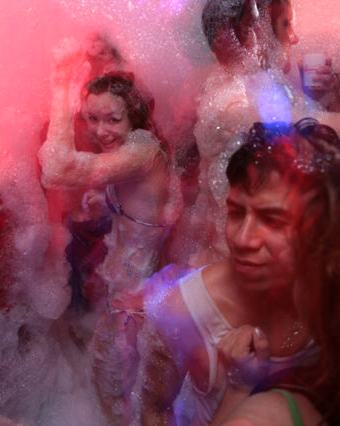
Nightclub patrons dancing at a foam party, in which the dance floor
is covered with non-toxic foam
suds
Types
Major cities in Europe and North America often have a variety of nightclubs, and some small towns and cities also have nightclubs. Nightclubs often feature lighting and other effects, to enhance the dancing experience. Lighting and effects include flashing colored lights, moving light beams, laser light shows, strobe lights, mirror-covered disco balls, or foam, and smoke machines.
Nightclub hours vary widely; in areas with liquor regulations in place, nightclubs may stay open until 1 AM or even 4 AM. In some cities, illegal "after hours" clubs stay open and serve alcohol after the legal closing time. In non-regulated areas, nightclubs stay open legally all night and into early daylight hours.
Variant types of nightclubs include non-smoking and alcohol-free nightclubs, or comedy clubs.
Restaurants or supper clubs may provide music and entertainment similar to that provided by a nightclub. However, the food is the main attraction at these establishments, whereas entertainment is the main attraction at a nightclub. Another type of club is a concert club, which specializes in hosting performances of live music. In contrast to regular night clubs, concert clubs are usually only open when a performance is scheduled. "Under 18" clubs are nightclubs which hold liquor-free dances for teens from 14 to 18 years of age.
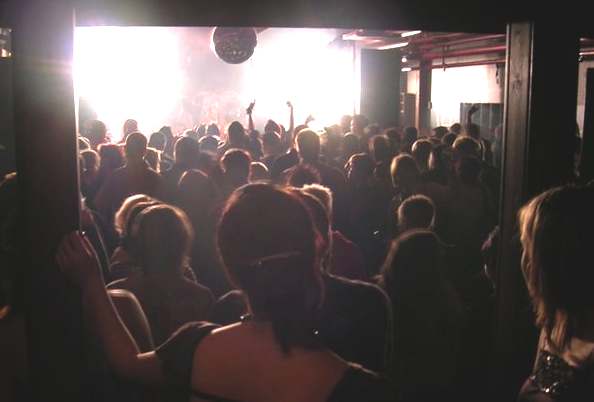
Dancers move to the beat of a DJ's dance music at a
nightclub
Nightclubs are usually built in former warehouses and cinemas, underground buildings, and custom-built buildings, with thick, insulated walls and few or no windows, so that the neighboring buildings will not be disturbed by the powerful beat of the dance music and the flashing strobe
lights. As well, this style of construction keeps light and noise from the street from entering the club.
This allows the nightclub to turn the dance floor into an alternate, illusory realm of timelessness. Even if an all-night rave at a nightclub lasts until 6 AM, when it is light outside, to the
club-goers, it is still dark inside the club, and the partying and dancing continue.
In most cases entering a night club requires a flat fee called a cover charge. Early arrivers and women often have cover waived (in the
United
Kingdom, this latter option is illegal under the Sex Discrimination Act 1975). Friends of the doorman or the club owner may gain free entrance. Sometimes, especially at larger clubs, one only gets a pay card at the entrance, on which all money spent in the discotheque (often including the entrance fee) is marked. Sometimes entrance fee and wardrobe costs are paid by cash and only the drinks in the club are paid using a pay card.
History
Early history
During US Prohibition, nightclubs went underground as illegal speakeasy bars. With the repeal of Prohibition in February 1933 nightclubs were revived, such as New York's Stork Club, El Morocco and the Copacabana. In Harlem, the Cotton Club was a popular venue for white audiences. Before 1953 and even some years thereafter, most bars and nightclubs used a jukebox or mostly live bands. In Paris, at a club named Whisky à Gogo, Régine laid down a dance-floor, suspended coloured lights and replaced the juke-box with two turntables which she operated herself so there would be no breaks between the music. The Whisky à Gogo set into place the standard elements of the modern discotheque-style nightclub. In the early 1960s, Mark Birley opened a members-only discotheque nightclub, Annabel's, in Berkeley Square, London. However, the first rock and roll generation preferred rough and tumble bars and taverns to elegant nightclubs, and the nightclub did attain mainstream popularity until the 1970s disco era.
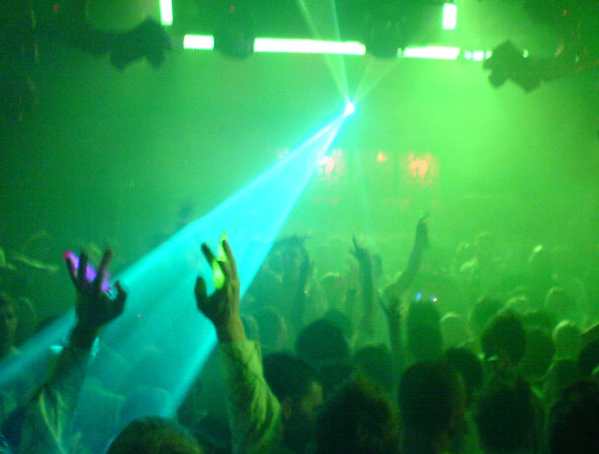
1970s: Disco
By the late 1970s many major US cities had thriving disco club scenes which were centered around discotheques, nightclubs, and private loft parties where DJs would play disco hits through powerful PA systems for the dancers. The DJs played "... a smooth mix of long single records to keep people “dancing all night long”
" Some of the most prestigious clubs had elaborate lighting systems that throbbed to the beat of the music. The largest UK cities like Liverpool, Manchester, London and several key European places like Paris, Berlin, Ibiza, Rimini also played a significant role in the evolution of clubbing, DJ culture and nightlife.
Some cities had disco dance instructors or dance schools which taught people how to do popular disco dances such as "touch dancing", the "hustle" and the "cha cha." There were also disco fashions that discotheque-goers wore for nights out at their local disco, such as sheer, flowing Halston dresses for women and shiny polyester Qiana shirts for men. Disco clubs and "...hedonistic loft parties" had a club culture which had many African American, gay
and hispanic people.
In addition to the dance and fashion aspects of the disco club scene, there was also a thriving drug subculture, particularly for drugs that would enhance the experience of dancing to the loud music and the flashing lights, such as cocaine
(nicknamed "blow"), amyl nitrite "poppers", and the "...other quintessential 1970s club drug Quaalude, which suspended motor coordination and turned one’s arms and legs to
Jell-O." The "[m]assive quantities of drugs ingested in discotheques by newly liberated gay men produced the next cultural phenomenon of the disco era: rampant promiscuity and public sex. While the dance floor was the central arena of seduction, actual sex usually took place in the nether regions of the disco: bathroom stalls, exit stairwells, and so on. In other cases the disco became a kind of “main course” in a hedonist’s menu for a night
out."
Famous 1970s discotheques included "...cocaine-filled celeb hangouts such as Manhattan's Studio 54 ", which was operated by Steve Rubell and Ian Schrager. Studio 54 was notorious for the hedonism that went on within; the balconies were known for sexual encounters, and drug use was rampant. Its dance floor was decorated with an image of the "Man in the Moon" that included an animated cocaine spoon. Other famous discotheques included the Loft, the Paradise Garage, and Aux Puces, one of the first gay disco bars. By the early 1980s, the term "disco" had largely fallen out of favor in North America).
1980s London
During the 1980s, during the New Romantic movement, London had a vibrant nightclub scene, which included clubs like The Blitz,the Camden Palace and Club for Heroes. Both music and fashion embraced the aesthetics of the movement. Bands included Depeche Mode, Human League, Duran Duran, Blondie, Eurythmics and Ultravox. Reggae-influenced bands included Boy George and Culture Club, and electronic vibe bands included Visage. At London nightclubs, young men would often wear make-up and young women would wear mens' suits.
1990s and 2000s
In Europe and North America, nightclubs play disco-influenced dance music such as house music, techno, and other dance music styles such as electro or trance. Most nightclubs in the U.S. major cities such as New York, Los Angeles, Las Vegas, Chicago, Houston, Philadelphia, Phoenix, Denver, Dallas, Atlanta, Miami, Detroit, Seattle, and San Francisco play hip-hop, house and trance music. These clubs are generally the largest and most frequented of all of the different types of clubs.
In most other languages, nightclubs are referred to as "discos" or "discothèques" (French: discothèque; Italian and Spanish: discoteca; German: Disko or Diskothek). In Japanese, disuko refers to an older, smaller, less fashionable venue; while, kurabu refers to a more recent, larger, more popular venue. The term night is used to refer to an evening focusing on a specific genre, such as "retro music night" or a "singles night."
After the fall of communism in the Czech Republic, "nightclub" or "night club" became a common euphemism for a brothel. Therefore this word is not used in its original meaning.
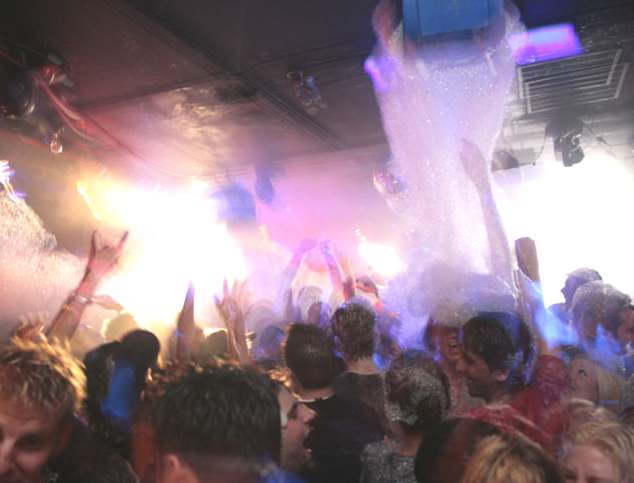
Clubgoers dancing at a foam
party
Accidents
Accidents
at nightclubs can occur for many reasons. The most disastrous accidents
were fires at well-visited nightclubs, so fire prevention has to be taken
great care
April 23rd, 1940, Rhythm Night Club Fire, 209 killed at nightclub fire at
Natchez, Mississippi, USA
November 28th, 1942, Cocoanut Grove fire, 492 killed in a nightclub fire
at Boston
March 8th, 1973, Whiskey Au Go Go fire, 15 killed after firebombing at
Fortitude Valley, Brisbane, Australia
August 2nd, 1973, Summerland disaster, 51 killed at fire at Summerland
leisure centre at Douglas, Isle of Man
May 28th, 1977, Beverly Hills Supper Club fire, 165 killed and 200 injured
in fire
February 14th, 1981, Stardust disaster, 48 killed and 214 injured at
nightclub fire at Dublin, Ireland
April 5th, 1986, Bomb attack on La Belle discotheque, Berlin, 3 killed,
230 injured
February 1990, Stage collapse at a discotheque at Bilbao, Spain, 13
injured
March 25th, 1990, Happy Land Fire, 87 killed in a nightclub fire at Happy
Land, New York City
December 20th, 1993, Kheyvis Fire, 17 killed in a nightclub fire at Buenos
Aires, Argentina
October 30th, 1998, Gothenburg nightclub fire, 63 people killed, 200
injured in a nightclub fire at Gothenburg, Sweden
October 13th, 2001, Stage toggled at Zapata discotheque Stuttgart, several
people hurt
2002, several people climb in a nightclub at Oberhausen on a 120 kg heavy
loudspeaker box and fell down with the box, 4 killed
October 12th, 2002, 2002 Bali bombings, 202 killed by large bombs
December 7th, 2002, Cowgate fire, Edinburgh, UK
February 20, 2003, The Station nightclub fire, 100 killed at nightclub
fire at Warwick, Rhode Island
December 30th, 2004, República Cromagnon nightclub fire, 194 killed and
714 injured in a nightclub fire at Buenos Aures, Argentina
December 31st, 2005, a circular crossbar fell down from the roof of a
nightclub at Ibbenbüren, Germany, 1 person heavy and 3 low hurt
June 18th, 2007, Gatecrasher One Fire, Sheffield, UK
LINKS
Atlantis
- Eastbourne Pier
Big
Beat Boutique - Brighton
The
Crypt - Hastings
Funktion
Rooms - Eastbourne
Kings
- Eastbourne
Oceana
- Brighton
TJ's
- Eastbourne
Trek
Club - Seaford
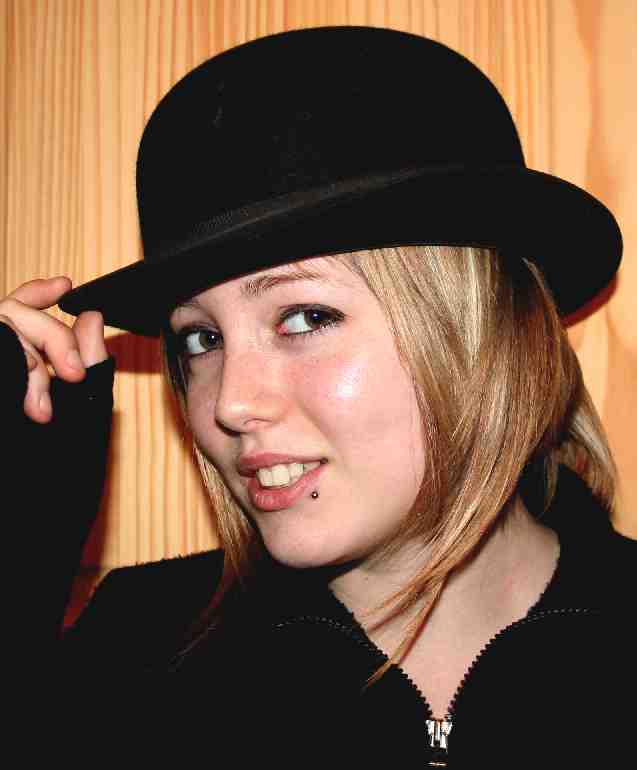
Christina,
Kings nightclub, Eastbourne
-
Rietveld,
Hillegonda C. (July/Augist 2000). "The
body and soul of club culture". Unesco Courier 53.
-
Lawrence,
Tim (2005-06-14). Reviews
of Love Saves the Day. Blog.
-
Gootenberg,
Paul 1954- Between Coca and Cocaine: A Century or More of U.S.-Peruvian
Drug Paradoxes, 1860-1980 Hispanic American Historical Review - 83:1,
February 2003, pp. 119-150. He says that "The relationship of cocaine
to 1970s disco culture cannot be stressed enough; ..."
-
Nitrites.
DrugScope.. “Amyl, butyl and isobutyl nitrite (collectively
known as alkyl nitrites) are clear, yellow liquids which are inhaled for
their intoxicating effects. Nitrites originally came as small glass
capsules that were popped open. This led to nitrites being given the name
'poppers' but this form of the drug is rarely found in the UK The drug
became popular in the UK first on the disco/club scene of the 1970s and
then at dance and rave venues in the 1980s and 1990s.”
-
Braunstein,
Peter (November 1999). "Disco".
American Heritage Magazine
MUSIC
INDEX A - Z

Solar
Cola drinkers like clubbing

330ml
alu Earth Can ....... The World in Your Hands
Solar
Red | Solar
Crush | Solar
Cola | Solar
Citrus | Solar
Spice
|






